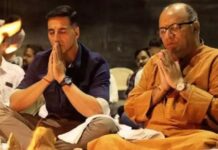Elia Kazan famously said ” I have admired his (Satyajit Ray’s) films for many years and for me he is the filmic voice of India, speaking for the people of all classes of the country… He is the most sensitive and eloquent artist and it can truly be said in his case that when we honor him we are honoring ourselves.”
Inspired by Italian Neorealism, Parallel Cinema or now called Indie cinema began just before the French New Wave and Japanese New Wave, and was precursor to the Indian New Wave of the 1960s. The movement was initially led by Bengali cinema and produced internationally acclaimed filmmakers such as Satyajit Ray, Mrinal Sen, Ritwik Ghatak, Tapan Sinha and others. It later gained prominence in other film industries of India. It is known for its serious content, realism and naturalism, with a keen eye on the sociopolitical climate of the times, and for the rejection of the dance-and-song numbers that are typical of mainstream commercial cinema.
Even in today’s days and times when another brigade of new wave Indian cinema are slowly capturing the mind space of Indian and overseas viewers, if there is any discussion even remotely associated with parallel cinema or Indian cinema in general, it finds a root in the thriving rivalry of perhaps three of the greatest filmmakers the country has nurtured. The dawn of Indie cinema (Independent cinema) in India is often attributed to Satyajit Ray, Mrinal Sen and Ritwik Ghatak, who began working in the Bengali film industry in the early ’50s. Parallel cinema was considered an adversary to conventional cinema, a brand of cinema that churned out economical films and focused mainly on social realism, humanitarianism, expressionism and societal issues like caste.
In 1955, with some financial help from the West Bengal government and after a rather lengthy production, Ray’s Pather Panchali debuted internationally to broad critical acclaim and was one of the first films to provide a glimpse into the traditions of this country to the global audiences. Pather Panchali, an outstanding cinematic achievement as it stands presently, is understandably considered to be a landmark film for the very reason that it was one of the early films to rival mainstream films so dauntlessly in India, and was also a fillip to the emerging new type of cinema. Prior to this, only Chetan Anand’s Neecha Nagar was an Indian film that had made any kind of substantial impact globally when it won the Grand Prix at the Cannes Film Festival in 1946. The films of V. Shantaram were also occasionally screened abroad, wresting praise from none other than Charlie Chaplin himself for his film, Manoos, but this particular titbit wasn’t momentous.
Mrinal Sen also made his debut with Raat Bhore the same year, but the outset of his career wasn’t as distinguished as Ray’s. Ghatak’s Nagarik, finished in 1952, was perhaps one of the earliest attempts to create an independent art film tackling neo-realism as a subject, but even his directorial debut was suppressed by Pather Panchali because Nagarik was mysteriously released in 1977. However, Nagarik is still recognized as a film that perhaps gave a helping hand to the teetering Indian independent film movement back then.
Though Ray continued to dominate the international film scene with two succeeding installments in his Apu Trilogy, and followed it up with Mahanagar and Charulata in the early ’60s, fame came fairly late for his two eminent rivals. Though the works of the three remained heavily praised in their birth country, only Ray’s works made international headlines.
In 1969 and with a little monetary aid from the Indian government, Sen’s Bhuvan Shome, a film I personally consider to be among the finest Hindi films I have seen, finally fetched him international acclaim. By then, Ray was already an established legend in the world of film while Ghatak’s films remained in the realms of his homeland. The three continued their meritorious rivalry to the end of their careers, but remained ardent admirers of each other’s oeuvre.
However, it all started with ‘The Indian New Wave’ movement. Known for its serious content, realism and depictions of the prevalent issues of those times, it dates back a long way with V.Shantaram’s 1925 silent film classic Savkari Pash as one of the earliest examples. The movement, initially led by Bengali cinema, started to take shape in the 1940s to the 1960s – a period often referred to as the ‘Golden Age of Indian Cinema.’ Most films made during this period were funded by the State Governments with an aim of showcasing an authentic art genre. Filmmakers, frustrated with the musicals of those times, set out to produce films with an intention of using the medium for something more than entertainment. Chetan Anand’s Neecha Nagar (1946), Satyajit Ray’s The Apu Trilogy (1955-1959) (produced on a shoestring budget), Bimal Roy’s Do Bigha Zamin (1953) and Guru Dutt’s Pyaasa (1957) are some of the defining movies of those times, garnering critical but moderate commercial success. They dominated International Film Festivals including Cannes, Berlin and Venice, winning multiple awards and captivating international audiences with their neo-realist brand of cinema, and are often listed among the greatest films of all time.
With the unexpected commercial success Mrinal Sen’s Hindi film Bhuvan Shome which performed tremendously well for a low budget art film, the market sensed the emergence of a middle class audience versed in the language of European cinema could potentially evolve into a lucrative niche market. This hunger for the art film was qualified in the success of Ankur, cementing the development of a parallel cinema with which both Benegal and Shabana Azmi became synonymous icons. However, the conditions for a new realist cinema spearheaded by Benegal were in no way a sudden phenomenon.
The core argument for an alternative mode of cinematic address had originally been touted by the IPTA, a leftist theatre organisation that found many of its members actively involved in using film as an ideological instrument. However, the state’s subservience to Hollywood imports and a reluctance to heed the advice outlined in a 1951 report by the S.K Patil Film Inquiry Committee delayed the inevitable emergence of an indigenous parallel cinema. But state sponsored cinema even today tends to provoke a strong reaction amongst some directors who argue that such a situation in which the political values of the state and those of the film maker co exist is problematic in that the two will inevitably come to a consensus, thus diluting and compromising the ideological purity of the film’s initial aims.
This might be true of countries in which the ruling government does make use of ideological state apparatus like cinema as a means of circulating dominant values but thankfully in India the films that have been financed either partially or fully by the NFDC arguably shared a leftist perspective that ran contrary to much of the conservative rhetoric espoused by consecutive Indian governments. Taking just under ten years for the government to respond to the recommendations of the report, in 1960, the film finance corporation was established by Nehru with a remit that centred on supporting good quality films through financial assistance in the form of low interest loans. Admittedly, at first the FFC initially aligned themselves with established directors in the film industry, backing in particular Satyajit Ray, and helped by the commercial success of Bhuvan Shome, thus encouraging the FFC to fully support ‘low budget, independent films’. The acceleration of loans between 1969 and 1979 made to over fifty films launched the careers of numerous directors, leading to a vibrant and politically conscious cinema.
Now, let’s talk a little about the major works of the trinity. Let’s take Satyajit Ray to start with. His Pather Panchali, based on a novel by Bibhutibhusan (Bandopadhyay, documented a family’s struggle for existence in the face of a famine and the growth of the boy Apu. Ray later wrote, “I chose Pather Panchali for the qualities that made it a great book; its humanism; its lyricism; and its ring of truth . . . . The script had to retain some of the rambling quality of the novel because that in itself contained a clue to the feel of authenticity; life in a poor Bengali village does ramble.” Ray went on to make two more movies on Apu (Aparajito in 1957, followed by Apur Sansar in 1960) to complete his famous Apu trilogy, though he had no thoughts of a trilogy when he embarked on the first film.
The latter two movies trace the life of a young man [Apu] in Calcutta, his early marriage to a village girl, his conflict with his father, and their final reconciliation. Contemporaneous with these films were two staggering films, Devi (“The Goddess”) and Jalsaghar (“The Music Room”), on the ways of the landed aristocracy in Bengal and its decline. In Devi, an elderly man has a vision that his young daughter-in-law is a goddess, and she is compelled to bear the burden of divinity; when her husband returns home from a trip, he finds his wife installed as a deity. The zeal with which a zamindar pursued his passion for music, though his estate lay crumbling around him, was the subject of Jalsaghar. Satyajit Ray’s later films treated more contemporary themes like the new urban culture (Nayak in 1966, Pratidwandi in 1970, Seemabaddha in 1971, Jana Aranya in 1975). With his film Shatranj Ke Khiladi (“The Chess Players”, 1977), based on a short story by the famous Hindi writer Premchand, Ray broke new ground. Here he ventured into the terrain of mid-nineteenth century India, the expansion of British rule, and what (to use a cliché) might be termed the ‘clash of cultures’.
This film made brilliant use of color, animation, and narration; it was also Ray’s maiden attempt at making a non-Bengali feature film. (His only other film in Hindi was Sadgati, produced for Indian television.) To a small extent, Shatranj Ke Khiladi drew him to the attention of the mainstream Indian film-going audience. After Shatranj Ke Khiladi, he returned to themes set in his native state of Bengal, though in Ghare Bhaire (“The Home and the World”), inspired by Tagore’s novel of the same name, Ray returned in part to the theme of British colonial rule. Ray’s films were characterized by a low budget, outdoor or locating shooting, authentic settings, detailed historical research, and a superb cast of actors and actresses who rose to eminent distinction under Ray’s direction. The greatest names in Bengali cinema worked for Ray, and Soumitra Chatterji, who appeared in half of Ray’s films, has himself recently been the subject of a long documentary film. Few of his films were commercially successful, and the greater majority were never screened outside Bengal, except at international festivals, in film clubs, and in Bangladesh. The movie he created for children, Goopy Gyne Bagha Byne, was his first market success and soon gained a cult following in Bengal. Ray himself never showed much interest in the popular Hindi cinema.
Then the second maestro of the trio, Mrinal Sen made his first feature film in 1953, which he soon tried to forget. His next film, Neel Akasher Nichey (Under the Blue Sky), earned him local recognition, while his third film, Baishey Shravan (Wedding Day) was his first film that gave him international exposure.
After making five more films, he made a film with a shoe-string budget provided by the government of India. This film, Bhuvan Shome (Mr. Shome), finally launched him as a major filmmaker, both nationally and internationally. Bhuvan Shome also initiated the “New Cinema” film movement in India.
His next few films were overtly political, and earned him the reputation as a Marxist artist. This was also the time of large-scale political unrest throughout India, particularly in and around Calcutta. This phase was immediately followed by a series of films where he shifted his focus, and instead of looking for enemies outside, he looked for the enemy within his own middle-class society. This was arguably his most creative phase and won him a large number of international awards.
Mrinal Sen never stopped experimenting with his medium. In his later films he tried to move away from the narrative structure and worked with very thin story lines. After a long gap of eight years, at the age of eighty, he made his latest film, Aamar Bhuban, in 2003.
Ritwik Ghatak began working with West Bengal’s IPTA wing in Calcutta in 1948, writing, directing and acting in his own plays, such as Jwala (“Flame,” 1951) and Dalil (“Document,” 1952). He acted in other plays, such as revivals of Bijan Bhattacharya’s Nabanna (“New Harvest,” 1944) and Dinabandhu Mitra’s Neeldarpan (“Indigo Mirror,” 1860), and adaptations of Gogol’s The Government Inspector and Gorky’s The Lower Depths. in 1952, Ghatak produced and directed his first feature film entitled, Nagarik (“The Citizen”). He completed eight feature films and ten documentaries before 1976.
In his films, Ghatak constructs detailed visual and aural commentaries of Bengal (located in northeast India) in the socially and politically tumultuous period from the late 1940s to the early 1970s. Twice during his lifetime Bengal was physically rent apart—in 1947 by the Partition engendered by the departing British colonizers and in 1971 by the Bangladeshi War of Independence.[10] In his work, Ghatak critically addresses and questions—from the personal to the national level—the identity of post-Independence Bengal. The formation of East Pakistan in 1947 and Bangladesh in 1971 motivated Ghatak to seek through his films the cultural identity of Bengal in the midst of these new political divisions and physical boundaries. Ghatak was an important actor in and commentator upon Bengali culture.
His films represent an influential and decidedly unique viewpoint of post-Independence Bengal. Unique, because in his films he pointedly explored the fallout of the 1947 Partition of India on Bengali society, and influential, because his films set a standard for newly-emerging “alternative” or “parallel” cinema directors — in contrast to those directors who opted for the hegemonic “Bollywood” or Bombay style(s) of Indian cinema. The majority of Ghatak’s films are narratives that focus on the post-Independence Bengali family and community, with a sustained critique of the emerging petite-bourgeoisie in Bengal, specifically in the urban environment of Calcutta. In this context, Ghatak utilizes a melodramatic style and mode novel to Indian cinema. His melodrama combines popular and classical idioms of performance from Bengal and India that are merged with Stanislavskian acting and Brechtian theatrical techniques.
Since then directors such as Adoor Gopalakrishnan, Buddhadeb Dasgupta, G. Aravindan, Aparna Sen, Shaji N. Karun, and Girish Kasaravalli have made significant contributions to Indie Cinema and won global acclaim. Then other filmmakers such as Shekhar Kapur, Mira Nair and Deepa Mehta have also found success overseas in the 90’s . That’s another story.
















